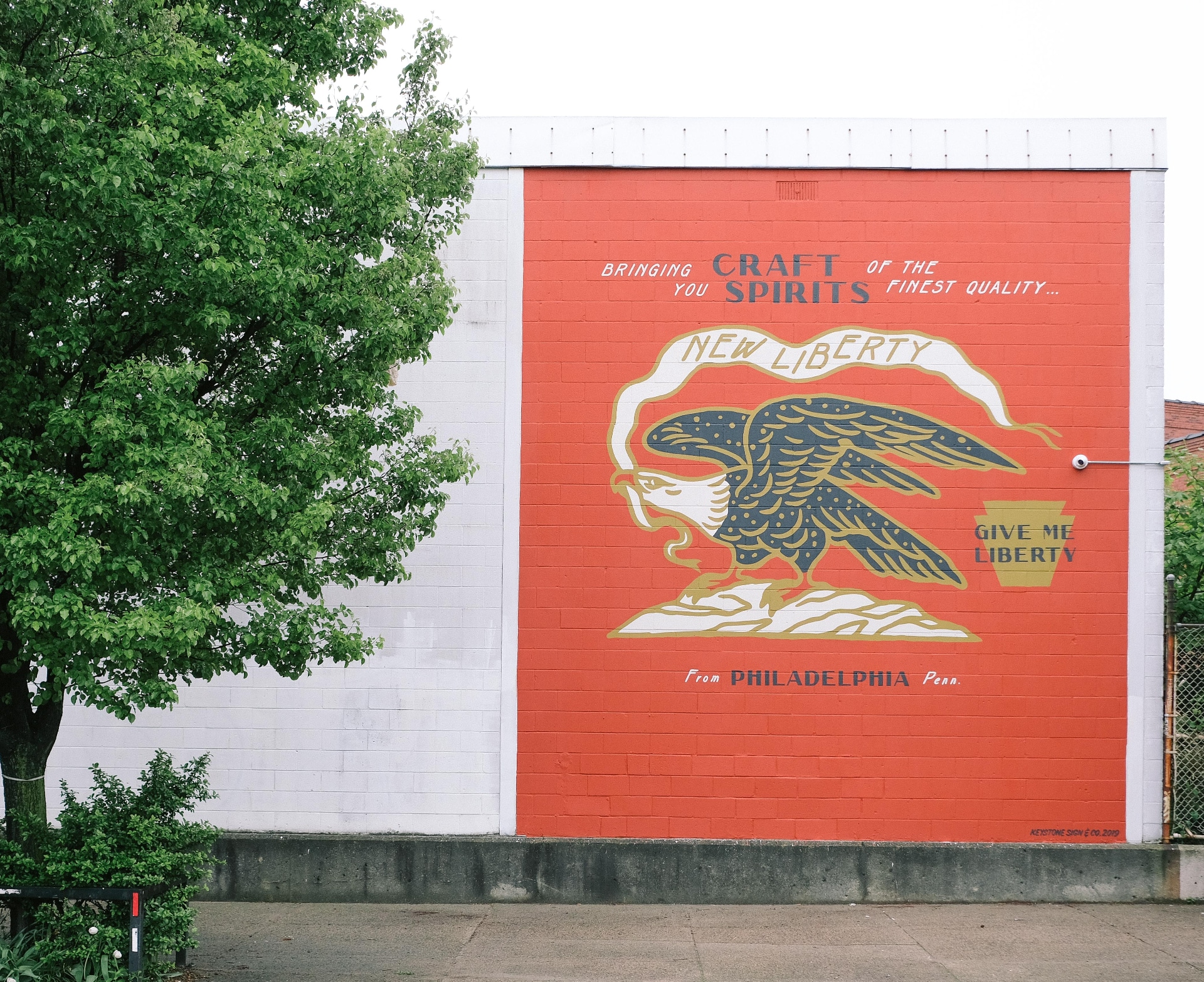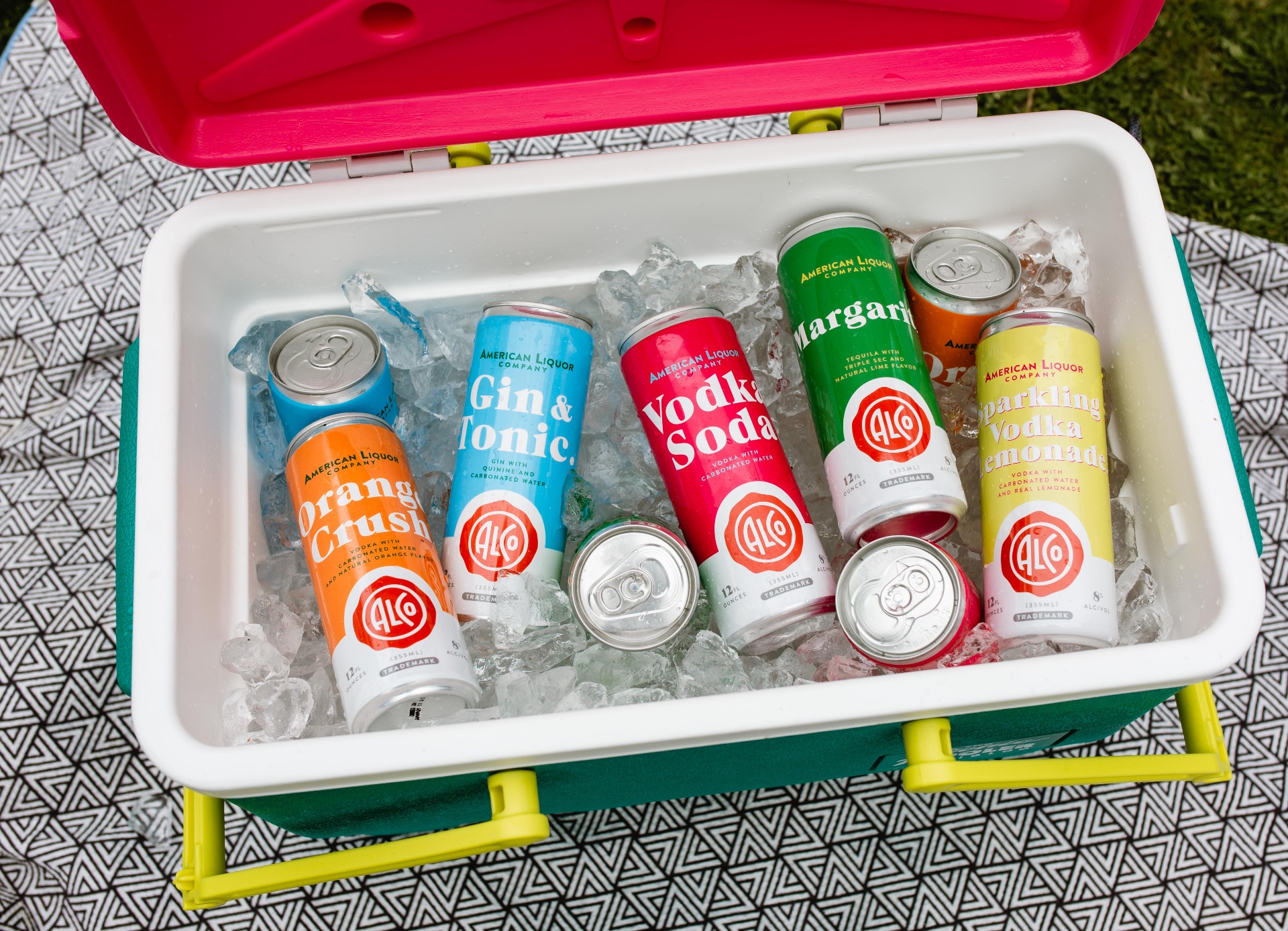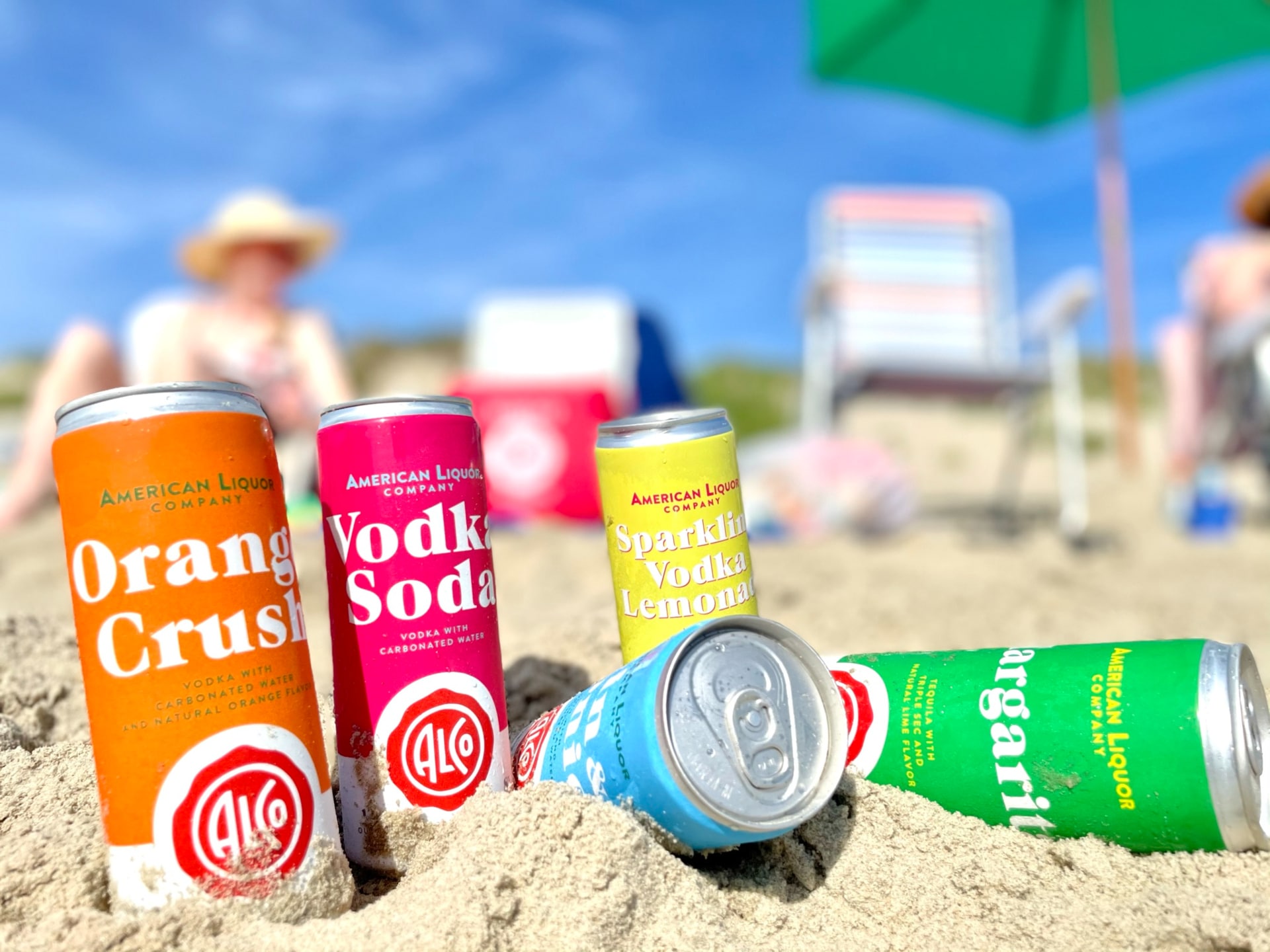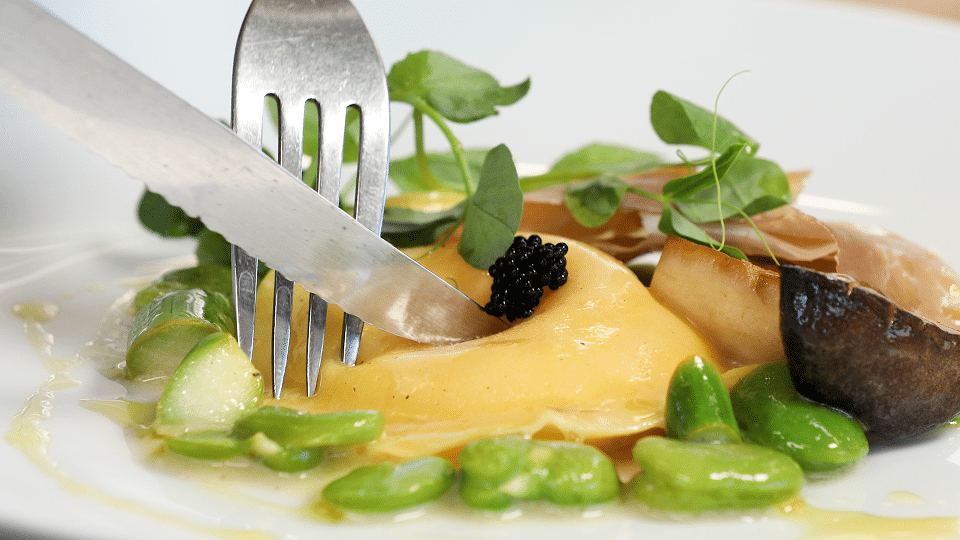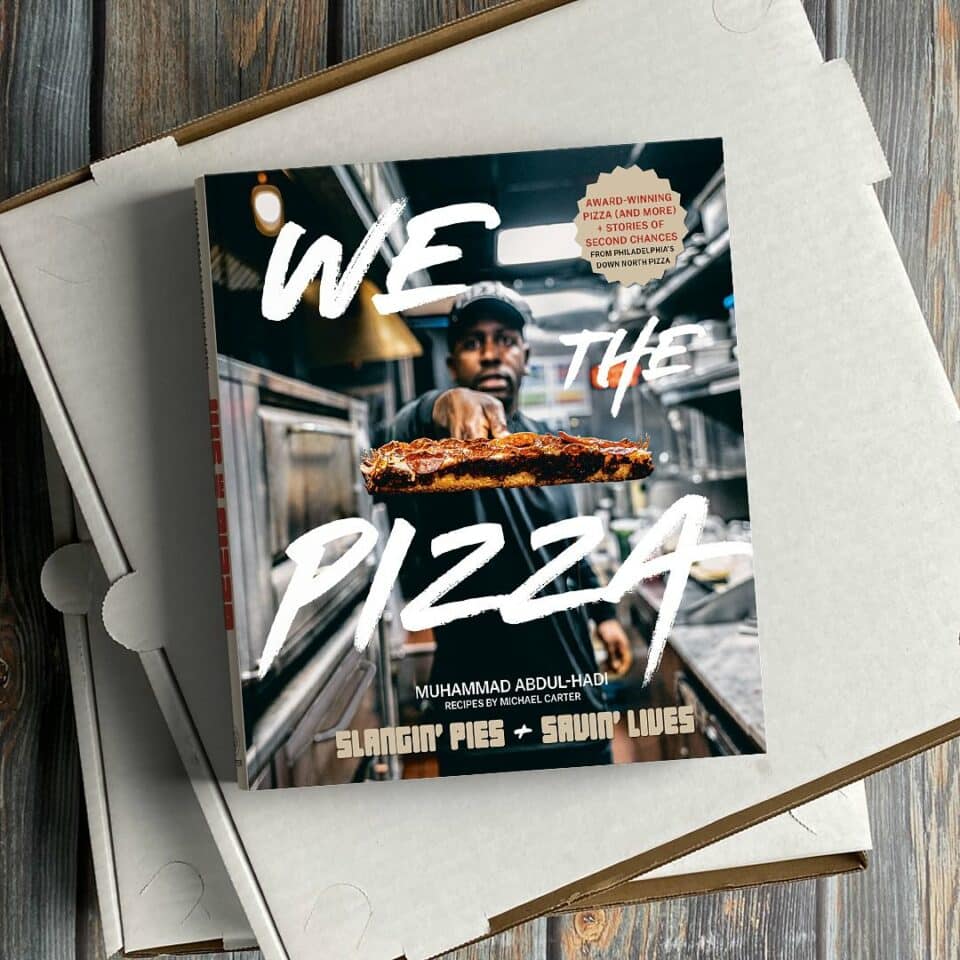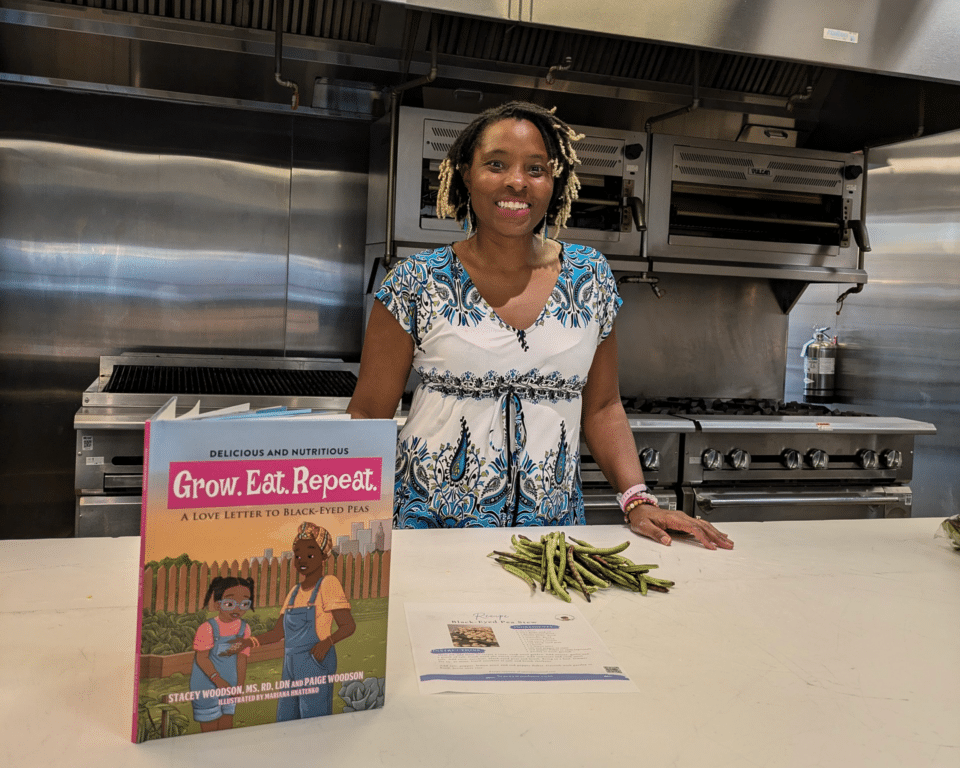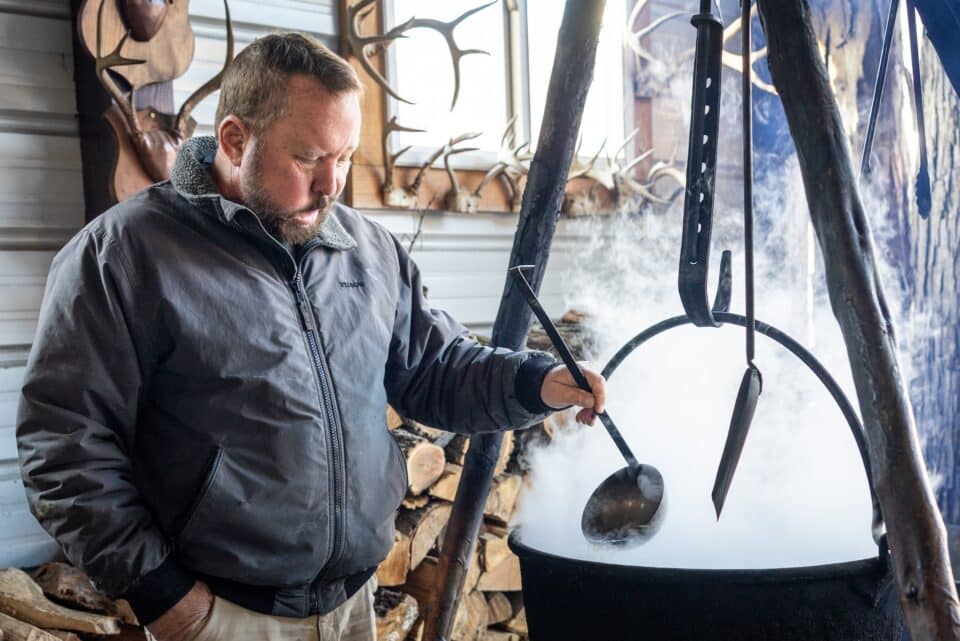Not that long ago — we’re talking like two decades — there was virtually no craft distilling in Pennsylvania. Now, you can snag a bottle of locally made hooch in pretty much any part of the state, from a tiny microdistillery in Philly to a whiskey powerhouse in Pittsburgh. How did things change so fast in this industry (and aren’t you glad they did)? Well, at least some credit for the rise of distilling in PA can be given to Rob Cassell, the original founder of Philadelphia Distilling, and the current owner of New Liberty Distillery, located in Philadelphia’s Olde Kensington neighborhood.
Part of the issue was that the state of Pennsylvania and its Liquor Control Board, didn’t make things easy for distilleries. Unlike breweries and wineries, these businesses weren’t allowed to sell directly to the public. That meant no charming tasting rooms with bottle sales, or well-designed direct-to-consumer website portals — their products could only be sold through state-run Fine Wine & Good Spirits stores, and that made it hard for local liquor brands to grow.
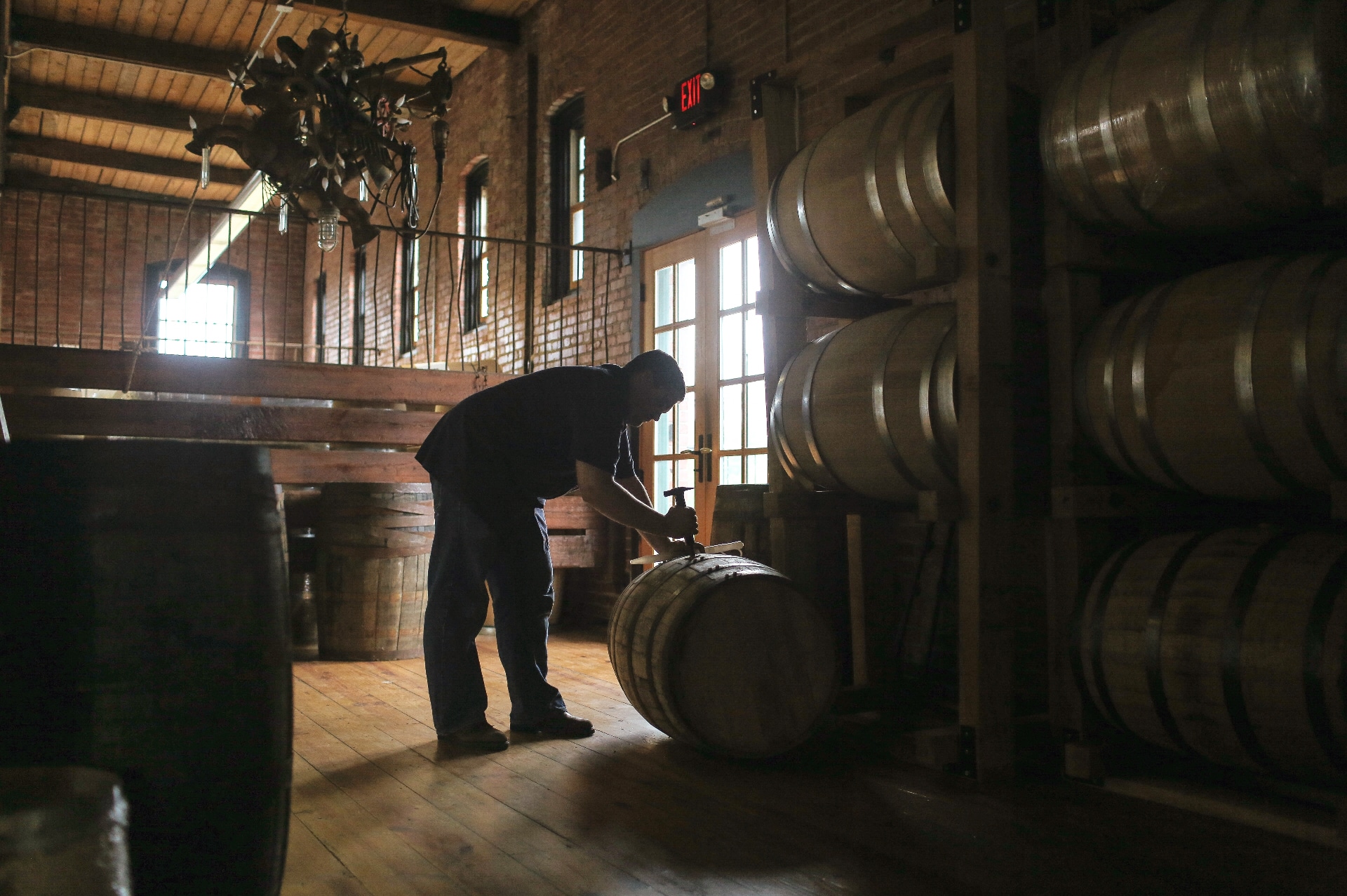
Thanks to Cassell, and a lot of other peoples’ hard work, that law did change. And in the years since, he’s been able to immerse himself in the local craft distilling community, establishing a well-regarded stable of spirits, including Kinsey Rye and Bloody Butcher Bourbon. He’s also just launched a fun new line of canned cocktails (more on that below), proving that there is still room for innovation and creativity in this distilling space.
We enjoyed a leisurely conversation with Cassell, and are excited to share more of this local maker’s story with you!
PA Eats: What first led you into craft distilling?
Rob Cassell: Awhile ago, I was the quality assurance director for Victory Brewing. I had this “aha moment” about spirits in general … we had plenty of local boutique wineries in PA, and of course lots of craft beer, but at the time, there was no craft distilling to really speak of. The label on the back of every spirits bottle said it was made in Kentucky or Connecticut. So, I wrote a very brief business plan, and pitched it to my uncle. From that, we started Philadelphia Distilling and Bluecoat Gin in 2005. Back then, we were one of the first 40 craft distilleries in the country, and the first in Pennsylvania since Prohibition. During the next 5 or 6 years, I started lobbying the state legislature, and eventually got a bill passed that allowed for the craft distillery license we all have now to exist. That’s the license that lets you sell to the public.
Did you have experience in politics? How did you go about your lobbying efforts?
My lobbying efforts were basically sitting with my cellphone and a list, and calling every single state senator and representative. I’d call them over and over, saying, “I buy my grain from a person in your district,” or, “My cousin lives in your district.” My attitude was that I was just going to get this done, very matter of fact. It took me six years and a lot of work, and it eventually got there. I got my teeth kicked in a few times, but learned a lot about seeing things from someone else’s perspective. Even now, when I walk around the room at hearings, I exchange business cards and introduce myself. I want to see who’s in the room.
So, how exactly did the distillery license change things in the industry? What was it like before that was passed into law?
Before that, you could make spirits, but if someone came to visit your distillery, you couldn’t sell them a bottle. You could only sell to the PLCB. With beer and wine, by comparison, you could do all of those activities on site. When I explained that to them, most of the politicians said, “What do you mean you can’t do that?” I lobbied under Governors Rendell and Corbett, and Gov. Corbett was nice enough to give me an advisory roll on the transition team, in terms of liquor legislation. That gave me a lot more access to allow to push this piece of legislation through.
By the time it was signed, which was just a couple days before Christmas in 2011, there were three licensed distilleries in Pennsylvania. As of now, there are 140! The impact it made allowed this industry to exist and flourish.
When the law came into effect, did it immediately change things for you at Philly Distilling?
At the time, when the law came into effect, the few PA distilleries were located in industrial areas or industrial parks, in old factory buildings. We weren’t retail-forward businesses. So, although we could magically start selling all of a sudden, that’s not how we’d invested and set ourselves up. Soon after that, Philly Distilling was purchased and I went to work for a consulting company and helped to build the new Hangar 1 distillery in San Francisco, and once that was wrapped up, I founded New Liberty.
What inspired you to start up another distillery? Are you just an entrepreneur at heart?
Yes! Working in the startup space … it doesn’t matter what industry you’re in, it’s like you’re holding on to the electric fence and you’re seeing how long can you hold on. To me, that’s what it’s like. It’s intense. If there’s a moment to take a little break, it does wonders for the mental psyche. But I like the drug of entrepreneurship, and I wanted more. I like the ride, I like building and creating, starting from zero. There’s just something intangible about it and you can’t get the same satisfaction elsewhere. If I have a single bottle of the Kinsey Wheat Whiskey in my hand, I can look at it and I can tell someone everything about it, from the evolution of the company, like us getting the trademark from our lawyer, to what’s inside the bottle.
You started New Liberty in a much different landscape than your previous venture, thanks in part to your own lobbying! What was that like?
It was the first time that I got to take advantage of all the legislation I worked on for those six years. When we were looking for a space, I was looking at everything under the sun: in the suburbs, old mills, industrial sites, everything. It took about 11 months with different real estate people searching everywhere. One of the things I was looking for was not having any generic-ness. I wanted a place that had character, that was my big thing. At our old place, people were underwhelmed.
I came across the place we’re in now by a total fluke accident. I was at my chiropractor’s and we got to chatting. He told me he knew a guy who had a cool space. I went to see it and it was exactly what I was looking for. There’s a realness to it.
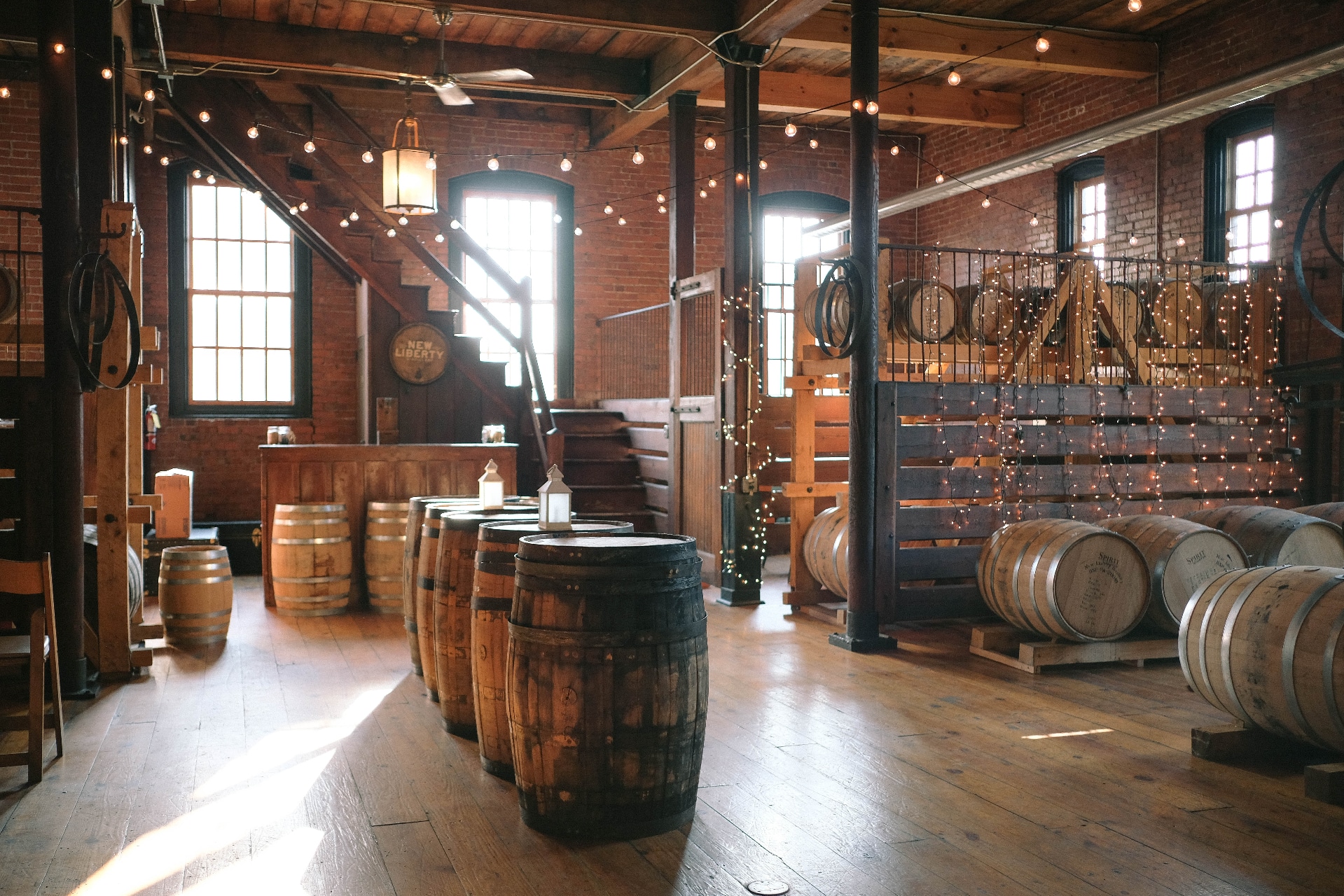
That’s what I’m trying to convey with our brands: Things having a meaning, a root and a purpose. The space has all the things decorators try to fake now. There’s no reclaimed wood — it’s actual 120-year old beams, it’s the real thing! There’s no ornate brickwork — it’s just the [brick] wall that’s always been there! There’s no facade to it.
Can you tell us about the evolution of the Kinsey brand? It has its origins in Pennsylvania, right?
Well, it seems like everyone tries to come up with these quirky names. I wanted to revive something that was real and existed in Pennsylvania’s rich history. The old Kinsey factory in Linfield was down the road from where I graduated from high school. It was the largest stockpile of whiskey in the US in the 1950s, and it’s still there, but I just knew it as this old abandoned industrial site. So I had this idea of doing our own interpretation.
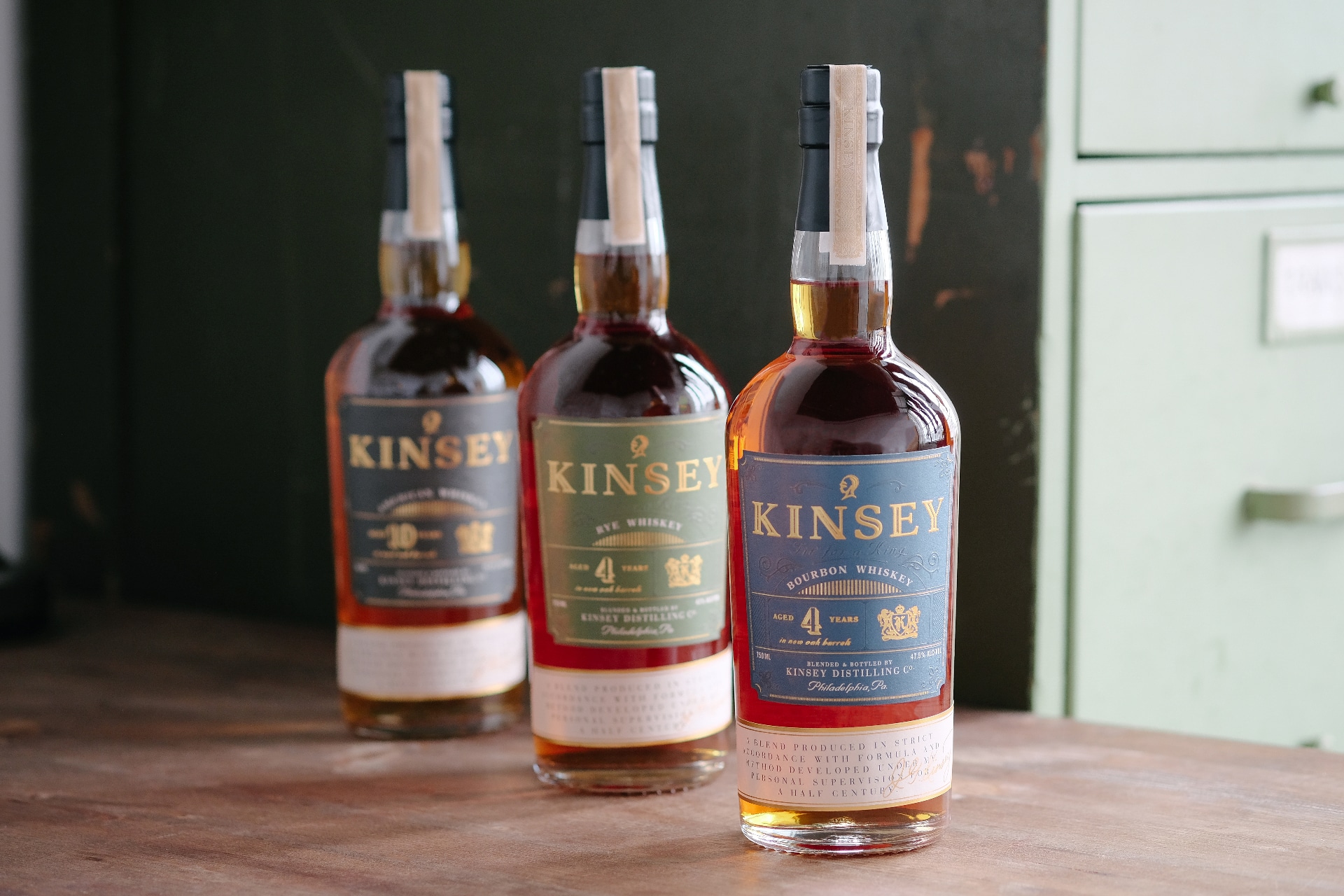
We got the trademark for the name but we didn’t know how to walk the line between a straight reproduction of the label and a new interpretation. For the first couple of years we didn’t get it right, and the label made it look like a grocery store brand. It didn’t fit. We partnered with Quaker City Mercantile, a local design firm and ad agency, and they helped us really refresh Kinsey to what it is now. Every part of the label has a meaning. Even the original ATF tax strips are photoshopped in, because I broke into that old Kinsey factory back in the day and found a bunch of them in a drawer!
How do you find the balance between honoring the long tradition of distilling and being playful and creative?
I try to see what else is out there, and if we can make it our own. We did an aged pear brandy one time simply because I had never seen one for sale in this region. We just have a lot of interesting fun in that way, taking some liberties. That’s what craft distilling is: putting your own spin on things.
Sometimes we just make one barrel of something, so when we say “limited release” we actually mean it. For instance, out Bloody Butcher whiskey was very popular, but we won’t have it again for three years. Our apple brandy sold out in 14 minutes! When we make these esoteric, off-the-wall things, I assume they will last us a year, and then my salespeople yell at me because there isn’t any more.
What can you tell us about your new ready-to-drink canned cocktails?
We are always doing some things that are left of center. Our canned cocktail line has been on the drawing board for two years. We had the designs and some basic ideas, but it wasn’t until we got caught up on making hand sanitizer (during the COVID-19 pandemic) that we could get to it. The whole idea is a different creative premise than what we do with Kinsey. It wasn’t about analyzing trends. It was looking at something very basic: the occasions of drinking. I don’t know about about you, but I don’t travel down to the beach with a nice expensive bottle of whiskey and a rocks glass. There are other moments that we consume alcoholic beverages, and we wanted to create something for that. They are 8% ABV, so pretty sessionable, but they still represent spirited cocktails. You want to be able to grab it and float down the Delaware River in a tube.
The flavors, like Margarita and Gin and Tonic, are all pretty familiar. How did you make them your own?
We’re all used to these flavored seltzer beer things. Flavored malt beverage is just flavored beer. When it comes to ingredients, we’re using the real thing. We use real lemon juice, not lemon flavoring. For our Gin & Tonic, we get our tonic from Natrona Bottling Co. in Pittsburgh. I like that it’s not deathly sweet, and it has some bitter notes. For our margarita, we’re one of the only ready-to-drink brands that I know of that are making triple sec from scratch. Those true flavors are what sets it apart.
To learn more about New Liberty Distillery, visit its website. Its tasting room and courtyard aren’t currently open, but private tours and tastings are available! Keep an eye on its Instagram for updates.
New Liberty Distillery is located at 1431 Cadwallader St. in Philadelphia; phone: (267) 928-4650
- Photos: Courtesy of New Liberty Distillery
